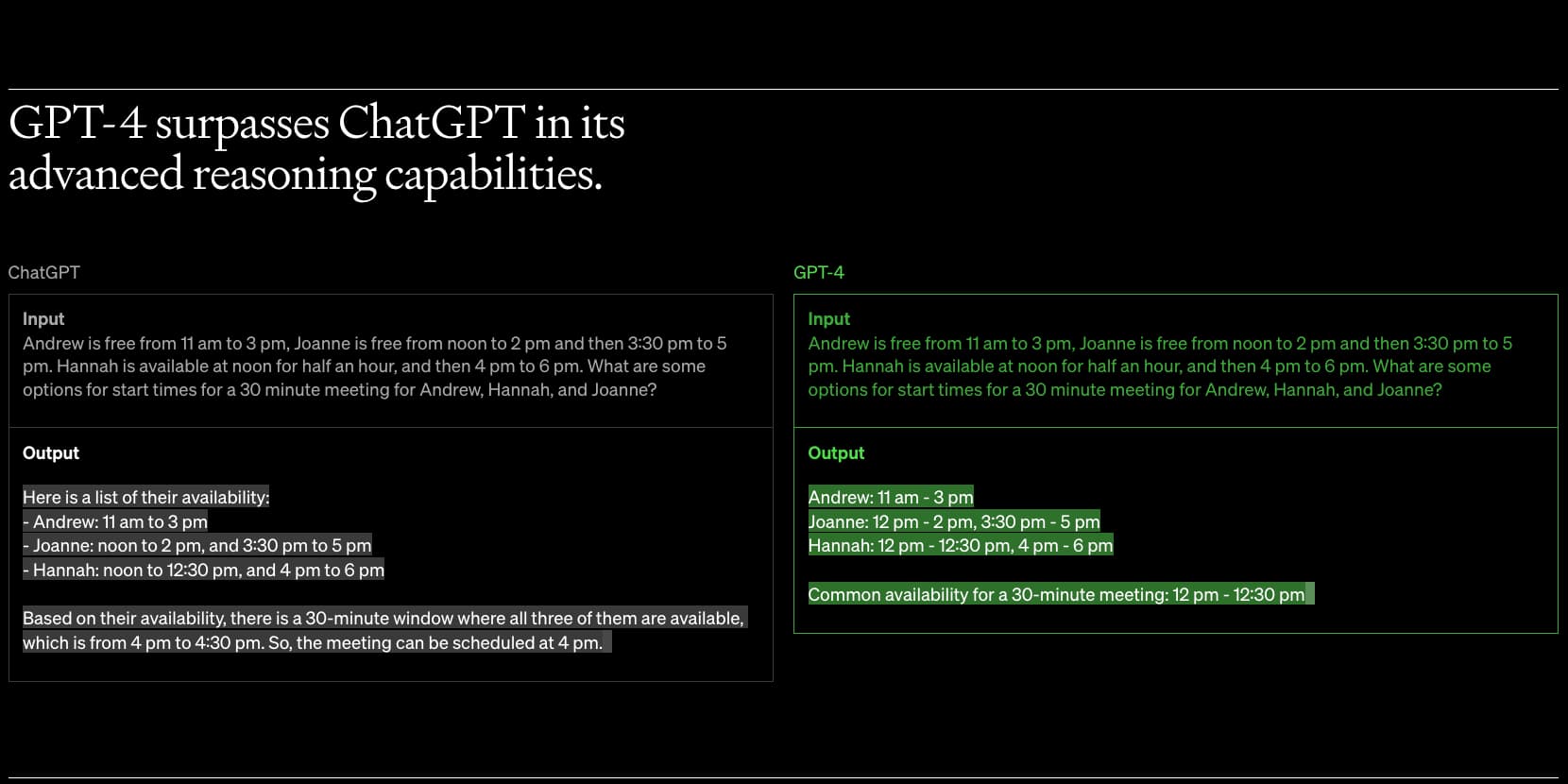GPT-4 is here, and it’s already stunning early testers. GPT-4 is the most powerful version yet of OpenAI’s large language model.

(Before we go any further, the quickest way today to get access to GPT-4 is to sign up for ChatGPT Plus, OpenAI’s $20/month subscription plan for ChatGPT, which offers GPT-4 as a model option.)
1. It can pass the US bar exam.
The advanced reasoning capabilities of the tool have already been tested by having it take the Uniform Bar Exam. It scored in the 90th percentile. Compare that to ChatGPT, which only scored in the 10th percentile. GPT-4 also scored in the 99th percentile when tested on a national biology competition. ChatGPT only scored in the 31st percentile.
Overall, the outputs of GPT-4 versus previous models are proving to be much more logical, accurate, creative, and well-reasoned than before.
2. It can understand images.
The model has the ability to understand images, a capability that isn’t yet available to general users. It may include the ability to process video at some point, too.
This ability to be “multimodal” makes GPT-4 much more powerful than text-only models. In one demo example, OpenAI showed off GPT-4’s ability to take a hand-drawn sketch of a webpage, understand it, and provide accurate code to build it.
3. But don’t ask too many questions about how it works.
OpenAI says it has made GPT-4 significantly safer than previous models. It is, they claim:
“GPT-4 is 82% less likely to respond to requests for disallowed content and 40% more likely to produce factual responses than GPT-3.5 on our internal evaluations.”
However, OpenAI has not shared specific details on exactly how GPT-4 works. OpenAI will not say how large the model is or how it was trained. In turn, this makes it difficult for researchers to better understand the model and its risks.
To some, this approach seems dangerous and hypocritical. Instead of being the open research organization it started out as, OpenAI appears to be taking a highly closed approach to its work.
OpenAI co-founder Ilya Sutskever even told The Verge that “We were wrong” about sharing research in the past, given the competition in the market and the safety risks of extremely powerful AI falling into the wrong hands.
Agree or disagree with the approach, one thing is clear – they are very confident that having it open is dangerous to humanity.
How to get ahead of the AI curve
The Marketing AI Institute are running a Piloting AI for Marketers course series, a series of 17 on-demand courses designed as a step-by-step learning journey for marketers and business leaders to increase productivity and performance with artificial intelligence.
The course series contains 7+ hours of learning, dozens of AI use cases and vendors, a collection of templates, course quizzes, a final exam, and a Professional Certificate upon completion.
After taking Piloting AI for Marketers, you’ll:
- Understand how to advance your career and transform your business with AI.
- Have 100+ use cases for AI in marketing—and learn how to identify and prioritize your own use cases.
- Discover 70+ AI vendors across different marketing categories that you can begin piloting today.
